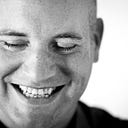2.7 Everyday Observations: Light

Embrace Limitations
With access to the camera on my iPhone in my pocket at all times, I’m able to collect a visual archive of my observations at a moment’s notice. For the past few years, I’ve been developing this database and uploading select images to flickr, an online photo sharing community. The process of uploading the files from my iPhone to flickr creates an algorithm without me even realizing it. Due to its file size, the iPhone to flickr transfer only allows five photos to be uploaded at a time. I’m sure there are other apps that allow a larger number of photos and files sizes to be uploaded, but I enjoy this limitation. It relieves me from thinking too much about how many photos I want to share. At the same time it gives me the opportunity to create a mini-series based on a particular theme. Often I will shoot fleeting moments, abstract graphic forms, or light and shadows that catch my eye.
Everyday Observations: Light evaluates a typology of these images and identifies a dominant visual theme of light: natural, artificial and reflective. I select and remix fifty images of light from the database. Just as I embrace the limitations of the upload to the database, I apply algorithmic rules to the extraction of the photos from the database that are transformed into the visual narrative of the book: all selected photos must be used in chronological order; and formal relations and juxtapositions from the shape of light must relate to each image combination as well as from page to page.

Open-Ended Algorithms
Along with the visual narrative of iPhone images, excerpts from conceptual artist Allen Ruppersberg’s essay, 50 Helpful Hints on Art of The Everyday, support the structure of Everyday Observations: Light. This essay is a conceptual user’s manual on how to operate within everyday life. Ruppersberg discusses his work by explaining, “I always thought that I should just work within the basic parameters that I establish for myself, and so all the early work-I just went through a lot of ideas, because that’s what I felt like doing, and all of those ideas were open-ended enough that I could go back to them any point and work on them some more. And this is what I always thought, while I was doing things in the ’70s as a young artist. I realized that I was moving fast through lots of ideas, and that if I liked them in the future, I would come back and do more. And so everything was left open and made available for further work. And so eventually, I think that’s what happened. The idea of rearranging my life and the work is an ongoing subject.” I admire the basic parameters Ruppersberg’s sets up within his work and I apply his open-ended yet systematic philosophy to Everyday Observations: Light with addition to my methodological foundation.
Originally published at http://jamesjgrady.com on June 15, 2012.
